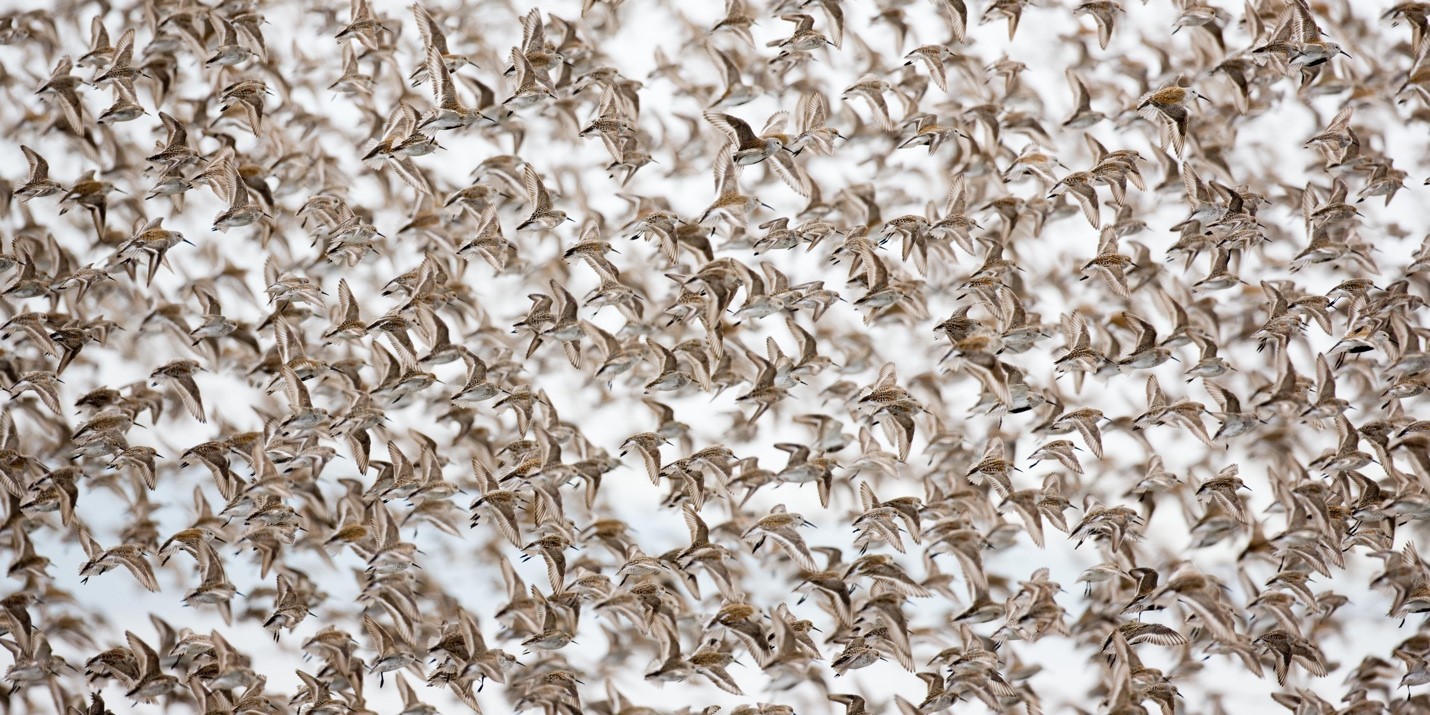By Kris Cu, Conservation Engagement and Outreach Worker, Birds Canada
On an overcast spring morning in BC, I sit in my car, waiting in line to board a ferry from Tsawwassen to Victoria. Along the BC Ferries causeway road, trucks slowly roll on the pavement while passengers enjoy the mild weather and rest by the quay market.
Looking north from my vehicle, the Deltaport shipping terminal is also visible. This massive human-made structure protrudes 4 kilometres out into the Strait of Georgia while its container cranes reach almost a hundred metres into the sky. Cargo ships the length of skyscrapers line up against the docks, carrying trading goods from across the world. This shipping terminal is responsible for the import and export of millions of products across the Salish Sea and beyond.

Deltaport terminal stretching into the Strait of Georgia. Photo: Alex Harris

Birds and their habitats are dwarfed by the structures of the Deltaport terminal. Photo: Michael Snyder
Despite the heavy development around this area of the Fraser River Estuary, it is still on the Ramsar List of Wetlands of International Importance and identified as an Important Bird and Biodiversity Area (IBA). The three main regions that make up the Fraser River Estuary IBA (Roberts Bank, Boundary Bay, and Sturgeon Bank) host an incredible amount of biodiversity. Over a hundred threatened species can be found here, including the Barn Owl, Southern Resident Killer Whale, and Chinook Salmon.
The unique habitat of the Estuary also enables one of the greatest spectacles of avian migration. Every spring, hundreds of thousands of Western Sandpipers stop on the IBA to forage along the vast mudflats. The shorebirds feed on energy-rich biofilm around the Roberts Bank area. The biofilm produces large amounts of essential long-chain polyunsaturated fatty acids only during the spring season, when large volumes of fresh water wash over the mudflats. The biofilm with its fatty acids acts as a superfood, playing an important role in this 40-gram bird’s 3000-kilometere flight to breeding grounds in Alaska.

Hundreds of thousands of migratory Western Sandpipers. Photo: Jason Puddifoot
Unfortunately, the future is uncertain for the Fraser Estuary IBA and the biodiversity that depends on it. The Roberts Bank Terminal 2 is a proposed project that will double the size of the current port. A federal review panel determined that if the project goes ahead, it will have “significant adverse and cumulative effects… that cannot be mitigated”. Shorebird populations in Canada have already declined by 40% since 1970. The port expansion would further advance the downward trend. Simply put, if the project is approved, hundreds of species will be driven closer to extinction.

Shorebirds in flight against the Deltaport terminal. Photo: Jason Puddifoot
I find myself reflecting on this reality as I wait in my car. The fate of several species rests on a single project so close to our home. The Fraser River Estuary is a spectacular, but vulnerable, site. We must be proactive in securing a sustainable future for the Estuary, which includes conserving, maintaining, and restoring the health of the ecosystems. For people and for birds, the Roberts Bank Terminal 2 project must be rejected.
With all the public comments and additional information now before the Minister of Environment and Climate Change Canada, it is hard to imagine anyone believing there won’t be significant adverse impacts to the environment. The question before our elected officials, then, is whether they believe the impacts can be justified by the economic benefits. I know how I feel about this question, but it is important your elected official hears from you about how you feel. Write to your federal elected officials and help make a difference: https://conserve.birdscanada.org/page/92991/action/1
